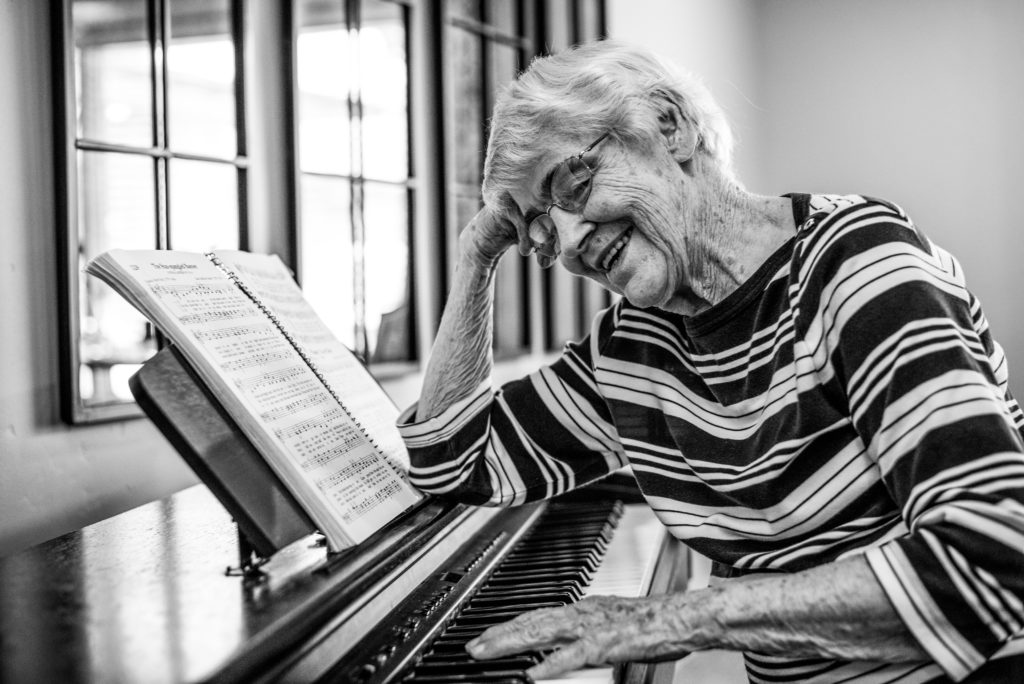On Sunday, March 29, the newest (eighth) season of BBC’s Call the Midwife began airing on PBS. I was very excited because, dear readers, this is my favorite show currently on television. One of the many reasons I like it so much is that it tackles truly intergenerational themes. The main characters live in an intergenerational community, and this isn’t always easy, but everybody learns from each other. Regular characters include both lay midwives at the beginning of their careers and nuns nearing the ends of theirs. And since these characters are nurses and midwives, every episode features births, and many feature deaths as well.
If you haven’t seen Call the Midwife, it follows the adventures of a group of midwives, some of them Anglican nuns, based at a convent called Nonnatus House in London’s impoverished East End. The first seasons are set in the late 1950s, but by this point, we’re in 1963. It took me awhile to start watching, as I was afraid it would be a downer of a show. After all, poverty and childbirth don’t exactly make for an uplifting mix. Except when they do. Once I started watching, I fell in love, because the midwives of Nonnatus House spend their time making unbearable conditions bearable. The show isn’t afraid to tackle hard things, and it manages to avoid being sugary, but I almost always finish an episode feeling good.
One of the hard subjects the show tackles is aging, and it’s the only show I’m aware of that has a regular character with dementia. Sister Monica Joan is not a “story of the week.” She appears in almost every episode and plays key roles in quite a few, including the season premier that aired on Sunday. One theme that repeatedly recurs around Sister Monica Joan is that as she ages, she feels more and more useless. She is no longer a practicing midwife, and her dementia makes it hard for her to contribute even in more minor ways. At the beginning of the series, she’s able to knit and crochet, but as she declines even those tasks become harder. Even when she could still do these things with ease, Sister Monica Joan would often exclaim that she was not useful. She knew she was being given busywork, and she hated it.
This issue was on full display in the Season 8 premier. At the beginning of the episode, the Midwives get new work bags to replace the bags they’ve used for decades. The old bags are shabby and in need of replacement, and National Health (the British agency that regulates midwifery and other medical services) regulations have changed. Fred, the midwives’ handyman, takes the old bags out back to burn them. When Sister Monica Joan sees this, she is very upset, especially since one of the bags he is burning had once belonged to her. When Fred is called away, she takes it and hides it.
When Sister Monica Joan falls ill, boundaries between past and present blur even more—as they so often do for those with dementia. She takes her bag and goes off in search of a mother and baby she believes require her services. The other nuns and lay midwives are frantic, of course, and they search high and low for her before finding her, shivering and terrified, in an abandoned building. It’s clear that Sister Monica Joan ran away because she believed she was needed elsewhere and because her identity was so tied up in her work that when her cognitive abilities were at their weakest, she went to do her job.
Sister Monica Joan is a beloved character for many reasons, not least of which is her ongoing dedication to the profession she once pursued. She loves helping women give birth, and she sees that, in addition to her religious vows, as her calling. Call the Midwife reminds us that people with dementia do not lose their core selves, even when they lose their professional skills.
Those who have loved ones with dementia or work with seniors will certainly notice that Sister Monica Joan’s dementia is not entirely realistic. To be sure, she improves and worsens as the plot requires. I’m sure many viewers wish their loved ones with dementia would bounce back as well as Sister Monica Joan often seems to do. That’s part of the problem with television, of course—while the marvelous Judy Parfitt would surely be up to portraying the decline, it would eventually become very painful to watch. Charlotte, my coworker in the Foundation office, has already mentioned that she starts every season with the fear this will be the year we lose Sister Monica Joan. If we were seeing a more typical progression of dementia,* we’d probably be a lot sadder.
If you want to join me in watching this wonderful show, all the previous seasons are available on Netflix. If you decide to take the plunge, you’ll probably find yourself binge watching, so I recommend stocking up on the following:
- Popcorn (a binge-watching staple)
- Hot chocolate (the midwives drink a lot of it, so it’ll start to sound pretty good after a few episodes)
- Tissues (just trust me—buy them at Costco)
Season 8 episode will be up to stream on the PBS website as they air, and they stay around for a week or two before they go behind a paywall.
*I feel sure my colleagues who are experts in dementia support would want me to mention that every case of dementia is different and there is no typical case. However, most types of dementia are progressive.



